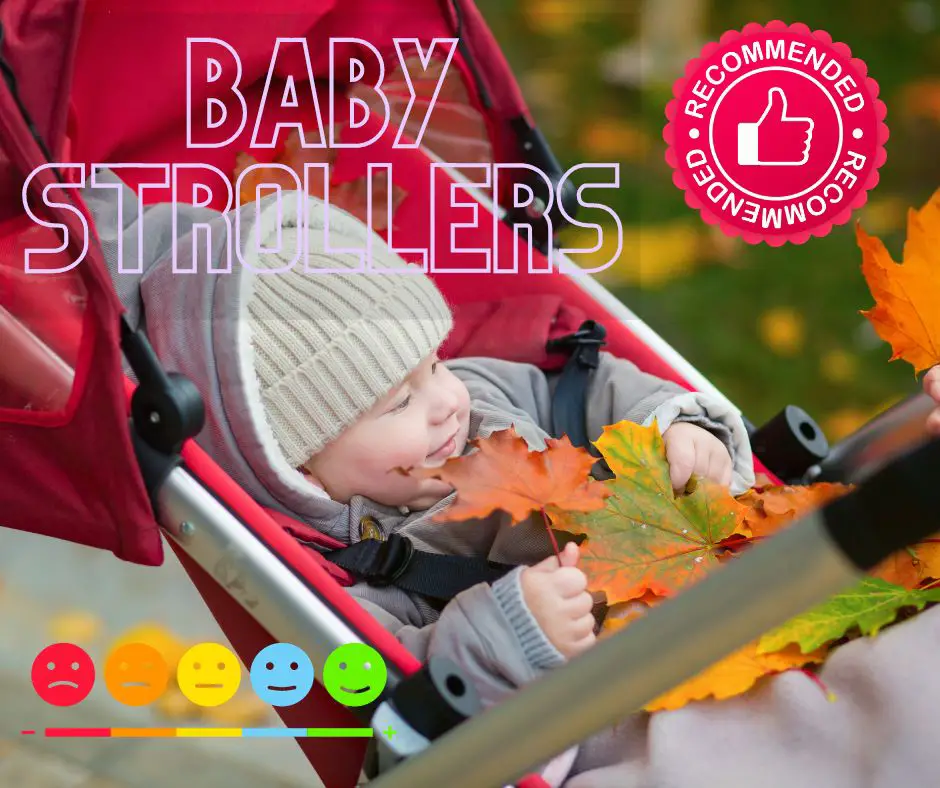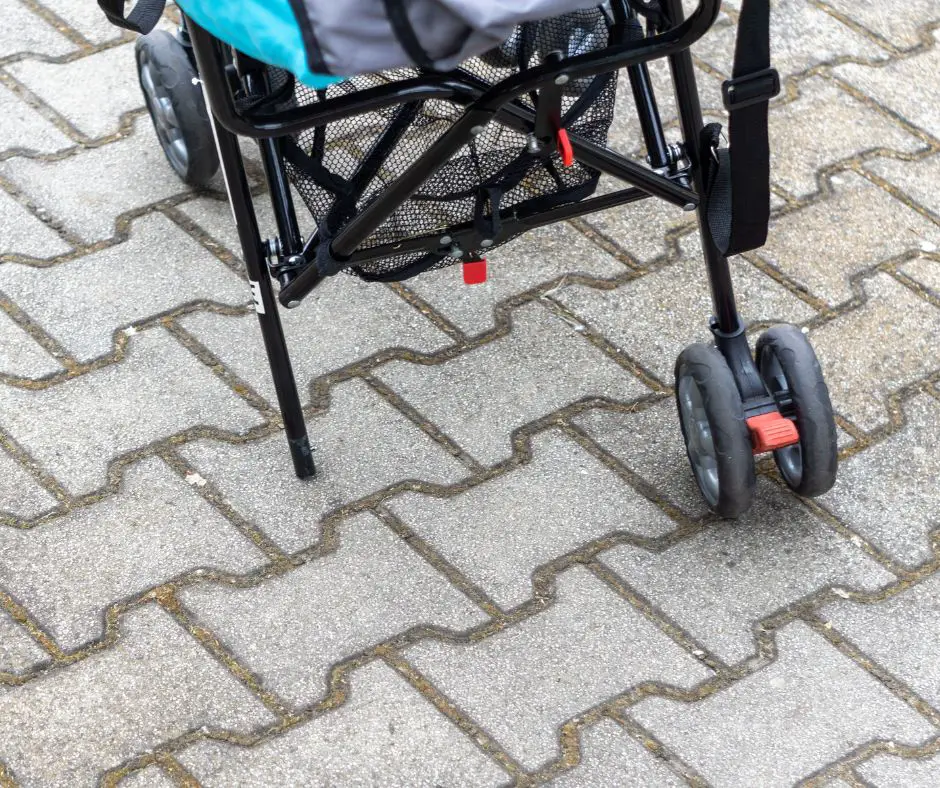Parenting Essentials: The Finite Lifespan of Strollers
Have you ever found yourself wondering, “How long are strollers good for?” If you’re a parent, this question has probably crossed your mind more than once. Strollers are not just a convenience; they’re a necessity for any parent on the go. But, like all good things, they don’t last forever. So, let’s dive into the world of strollers and find out how long they can be a part of your family’s journey.
How long are strollers good for?
The lifespan of a stroller can vary significantly based on several factors, including the quality of the stroller, how well it’s maintained, and the frequency and manner of its use. On average, a good-quality stroller can last anywhere from 3 to 5 years. However, some high-end models designed with durability in mind might last even longer if they are well maintained.

Factors Affecting Stroller Longevity
Certainly, let’s expand on each of the headings to provide more details on the factors affecting stroller longevity:
Usage and Care:
The longevity of your stroller is significantly influenced by how you use and care for it. Proper usage and regular maintenance can extend its lifespan.
- Proper Usage: Using the stroller as intended and within its weight and size limits is crucial. Overloading it or using it for activities it wasn’t designed for can lead to premature wear and tear.
- Cleaning: Regular cleaning is essential. Dirt, debris, and spills can accumulate over time, potentially causing damage. Clean the fabric, frame, and wheels according to the manufacturer’s instructions. Storing it in a clean and dry place can also prevent unnecessary wear.
- Inspect and Tighten: Periodically inspect the stroller for loose parts, such as screws, bolts, or connectors. Tighten them as needed to maintain structural integrity.
- Avoid Rough Terrain: If your stroller isn’t designed for off-road use, avoid rough terrain or uneven surfaces. Prolonged exposure to harsh conditions can affect its wheels and suspension.
Quality of Materials:
The quality of the materials used in the construction of the stroller plays a significant role in its longevity. While higher-quality materials may come with a higher upfront cost, they often provide better durability.
- Frame Material: Strollers come in various frame materials, including aluminum, steel, and lightweight alloys. Aluminum frames are known for being lightweight and corrosion-resistant, while steel frames offer strength but can be heavier. Choosing a frame material that suits your needs and preferences is important.
- Fabric Quality: The fabric used for the seat, canopy, and other parts of the stroller should be durable, easy to clean, and resistant to fading. High-quality fabrics are less likely to tear or show signs of wear.
- Wheel Material: Consider the type of wheels on your stroller. Rubber wheels, especially air-filled ones, tend to provide a smoother ride and better longevity compared to plastic wheels. Additionally, look for wheels with good tread for better traction.
- Seat Padding and Straps: Ensure that the stroller’s seat padding and safety straps are made from materials that are comfortable for your child and can withstand regular use and cleaning.
Signs of a Wearing Stroller
- Fraying Fabrics: Keep an eye on the stroller’s fabrics, including the seat cover, canopy, and padding. If you notice fraying, tears, or signs of excessive wear, it’s a clear indication that the stroller is showing its age. Damaged fabrics not only affect the stroller’s appearance but also its comfort and safety for your child.
- Wobbly Wheels: One of the most noticeable signs of a deteriorating stroller is wobbly wheels. If the wheels shake, rattle, or wobble when you push the stroller, it can be a sign of worn-out bearings, axles, or wheel components. Unstable wheels can compromise the smoothness of the ride and the stroller’s overall safety.
- Difficult Folding Mechanisms: A well-functioning stroller should fold and unfold smoothly with minimal effort. If you find that the folding mechanism has become stiff, requires excessive force, or doesn’t lock securely in the folded position, it’s a clear indication of wear and tear. A faulty folding mechanism can be inconvenient and potentially hazardous.
- Squeaks and Noises: Pay attention to any unusual sounds emanating from the stroller while in use. Squeaks, creaks, or grinding noises may indicate that certain parts, such as hinges or joints, are experiencing friction or damage. These noises can not only be annoying but also signal underlying issues.
- Handlebar Grip Deterioration: The handlebar is a frequently used part of the stroller. If you notice that the handlebar grips are worn, cracked, or becoming uncomfortable to hold, it’s a sign of wear. A deteriorating handlebar grip can affect your comfort while pushing the stroller.
- Fading and Discoloration: Over time, exposure to the sun and weather can cause the stroller’s color to fade or become discolored. While this may be primarily a cosmetic issue, it can still indicate that the stroller has been exposed to prolonged environmental stress.
- Safety Mechanism Failure: If any of the stroller’s safety mechanisms, such as the brakes or harness buckles, start to malfunction or fail to operate as intended, it’s a serious concern. The safety of your child should always be a top priority, so any issues with safety features should be addressed promptly.

Safety First: When to Replace Your Stroller
Ensuring the safety of your child should always be your utmost concern. Your choice of a stroller is a critical aspect of safeguarding your child’s well-being. Recognizing the signs indicating when it’s time to replace your stroller is vital for maintaining a secure and reliable mode of transportation.
- Structural Damages Demand Immediate Action: Structural damage to a stroller can compromise its integrity and pose serious risks to your child’s safety. When you observe any visible cracks, fractures, or bent frame components, it’s essential to take prompt action. A structurally compromised stroller may fail to provide adequate support and protection for your child, making it necessary to seek a replacement immediately.
- Wheel Wear and Tear: The condition of your stroller’s wheels significantly impacts its stability and maneuverability. Excessive wear and tear, including flattened tires, uneven tread, or visible damage, can affect how the stroller functions. When the wheels show signs of wear, it can lead to difficulties in pushing the stroller smoothly and may compromise your child’s safety. Replacing the wheels or considering a new stroller becomes a prudent choice.
- Brake Reliability Is Non-Negotiable: Stroller brakes are a fundamental safety feature that must function reliably. If the brake system fails to engage or disengage properly, it creates a significant safety hazard. Ensuring that the brakes operate as intended is essential to prevent unexpected movements and maintain control over the stroller. If there are any doubts about the brakes’ effectiveness, it’s a clear signal to explore replacement options.
- Harness and Straps Integrity: The harness and safety straps are critical components for securing your child within the stroller. Any signs of wear, such as fraying, tears, or weakened buckles, can jeopardize your child’s safety. These components must be in excellent condition to fulfill their role effectively. If they show signs of deterioration, it’s imperative to either replace them or consider a new stroller that guarantees your child’s safety.
- Attention to Recalls and Safety Advisories: Stay informed about recalls or safety advisories related to your stroller’s make and model. Manufacturers occasionally issue recalls due to safety concerns. Should your stroller become subject to a recall, follow the manufacturer’s guidance for repair or replacement. Ignoring recall notices can pose unnecessary risks to your child’s safety.
Types of Strollers and Their Durability
When considering the purchase of a stroller, understanding the various types and their respective durability is essential. Each category of stroller, from lightweight to jogging strollers, offers unique features and a specific lifespan, tailored to different lifestyles and needs.
- Lightweight Strollers: These strollers are known for their portability and ease of use. Ideal for travel and quick trips, they typically last from 3 to 5 years. Their lifespan often depends on the frequency of use and the quality of the materials.
- Standard Strollers: Offering more features than lightweight models, standard strollers are designed for everyday use. With proper care, they can last for approximately 5 to 7 years. They are a versatile choice for parents who need a reliable, everyday stroller.
- Jogging Strollers: Built for durability and stability, jogging strollers are made to withstand more rigorous use. On average, they can last up to 5 years or more, but this depends heavily on how often they are used in rough terrain.
- Double Strollers: These are designed for parents with twins or two young children. The longevity of double strollers varies but generally falls within the 3–6-year range, influenced by the weight of the children and the frequency of use.
- Travel Systems: Combining a car seat and stroller, travel systems are a convenient option for parents on the go. They usually last from the newborn stage up to 3 or 4 years, depending on the model’s specific weight and height limitations.
- Umbrella Strollers: Known for their compact fold and lightweight design, umbrella strollers are ideal for quick outings and travel. They typically have a lifespan of about 3 to 4 years, making them suitable for children who can sit up unassisted.
- Convertible Strollers: These strollers can adapt from single to double strollers, making them a long-term investment. With a lifespan of around 5 to 7 years, they are perfect for growing families.
- All-Terrain Strollers: Designed to handle various surfaces, these strollers offer durability and a smoother ride on different terrains. They generally last for 5 years or more, depending on usage and maintenance.
When choosing a stroller, it’s important to consider how it aligns with your lifestyle, the age of your child, and the intended use. Durability is a key factor, but so is the stroller’s adaptability to your growing family’s needs. Regular maintenance and careful use can also extend the life of a stroller, making it a lasting investment for your family.
Maintenance Tips for Extending Stroller Life
To extend the life of your stroller, regular maintenance is crucial. Here are some detailed tips to help you keep your stroller in top condition:
- Regular Cleaning: Clean your stroller frequently to remove dirt, food particles, and spills. Use a mild detergent and a damp cloth for the fabric parts, and a soft brush or sponge for the frame.
- Check and Tighten Screws: Periodically inspect all screws and fastenings. Tighten any loose screws to ensure the stroller’s structural integrity.
- Lubricate Wheels and Moving Parts: Apply a silicone-based lubricant to the wheels and any moving parts. This prevents squeaking, makes the stroller easier to maneuver, and protects against rust and wear.
- Inflate Tires Properly: If your stroller has air-filled tires, keep them properly inflated according to the manufacturer’s instructions. This ensures a smoother ride and reduces wear on the tires.
- Store the stroller correctly. Avoid leaving the stroller in direct sunlight or in damp areas for extended periods. Exposure to harsh weather can fade the fabric and weaken the frame.
- Inspect for Wear and Tear: Regularly check the stroller for signs of wear, such as frayed fabrics or loose parts. Addressing these issues promptly can prevent more significant problems.
- Follow Weight Limits: Adhere to the manufacturer’s recommended weight limits. Overloading the stroller can strain the frame and wheels, leading to quicker deterioration.
- Use Stroller Accessories Wisely: Be cautious with overloading storage baskets or hanging heavy bags on the handles, as this can tip the stroller or damage the frame.
- Handle Folding Mechanisms Gently: When folding and unfolding the stroller, do so gently to avoid damaging the mechanisms.
- Avoid Rough Terrain: Unless your stroller is designed for rough terrain, stick to smooth surfaces to prevent undue stress on the wheels and frame.
By following these maintenance tips, you can significantly extend the lifespan of your stroller, ensuring it remains safe and comfortable for your child for years to come.
Cost vs. Quality: Striking a Balance
Striking the right balance between cost and quality in a stroller is crucial for ensuring both affordability and long-term satisfaction. Here are some key considerations to help you make an informed decision:
- Assess Your Needs: Identify your primary needs. Do you need a stroller for jogging, or is it primarily for daily errands? Understanding your specific requirements can guide you toward a stroller that offers the necessary features without overpaying for unnecessary extras.
- Research Durability: Investigate the stroller’s build quality. Look for sturdy frames, durable fabrics, and reliable wheels. A well-built stroller may cost more initially, but it can save money in the long run by avoiding frequent replacements or repairs.
- Consider longevity: choose a stroller that grows with your child. Convertible strollers that adapt from a bassinet to a toddler seat, or those that can transition from a single to a double, offer greater longevity and value.
- Examine Features and Accessories: Prioritize features that offer the most value for your lifestyle. For instance, if you live in a city, a compact, easy-to-fold stroller might be more beneficial than one with off-road capabilities.
- Check Reviews and Warranties: Read user reviews and check warranty terms. Reviews can provide insight into a stroller’s real-world performance and durability, while a good warranty can offer peace of mind and protection for your investment.
- Budget wisely: Set a realistic budget. Remember, the most expensive stroller isn’t always the best, and budget options can sometimes surprise you with their quality and features.
- Avoid False Economy: Be wary of purchasing a low-cost stroller that doesn’t meet your needs or has poor construction. It might necessitate a replacement sooner than expected, leading to higher overall costs.
- Think about Resale Value: Consider the stroller’s resale value. Brands and models known for their durability and longevity often maintain a higher resale value.
- Safety First: Ensure the stroller meets all safety standards. Never compromise on safety features to save money.
The Second-Hand Stroller: Yay or Nay?
When considering the purchase of a second-hand stroller, it’s important to balance the potential benefits with the potential risks. While opting for a pre-owned stroller can be a cost-effective and environmentally friendly choice, it’s crucial to be vigilant about the stroller’s compliance with current safety standards and its overall condition.
1. Check for Up-to-Date Safety Standards: Safety standards for baby products, including strollers, evolve constantly. What was deemed safe a few years ago might not meet today’s safety requirements. Always verify that a second-hand stroller adheres to the most recent safety standards. This check is vital for ensuring your child’s safety.
2. Inspect for hidden damages: A thorough inspection is necessary to uncover any potential damage that might not be immediately apparent. Look for signs of wear and tear, such as loose screws, frayed straps, or faulty brakes. These issues could compromise the stroller’s safety and functionality.
3. Consider the Stroller’s Age: The longevity of a stroller depends on its make and model, as well as how well it has been maintained. However, as a general rule, be cautious of strollers that are more than five years old, as they may be more likely to have wear-related issues or be out of step with current safety standards.
4. Evaluate the Brand and Model: Research the brand and model of the second-hand stroller. Some brands are known for their durability and long-lasting quality, which can be a good indicator of how well the stroller might hold up over time. Also, check for any recalls or known issues with the specific model.
5. Check for Cleanliness and Hygiene: Ensure the stroller is clean and free from mold, mildew, or other hygiene issues. A thorough cleaning is advisable, but some issues might be too deep-seated to resolve and could pose health risks to your child.
6. Consider Your Needs and Preferences: Finally, evaluate whether the second-hand stroller meets your specific needs and preferences. Consider factors like storage space, ease of folding, weight, and how well it fits in your car or home.
When to Upgrade Strollers: Growing with Your Child
As your child grows, their needs, and consequently, the requirements for their stroller, evolve. Being prepared to upgrade your stroller at the right time is essential to ensuring your child’s comfort, safety, and the overall convenience of your outings. Here are key points to consider when deciding if it’s time to upgrade your stroller:
1. Monitor Your Child’s Size and Weight: Most strollers have weight and height limits. Regularly check to see if your child is approaching these limits. An overburdened stroller can be unsafe and uncomfortable for your child and difficult for you to maneuver.
2. Assess Your Child’s Developmental Stage: As your child grows, they may become more active and curious about their surroundings. A stroller that offers more upright seating and better visibility might be more suitable for a toddler who wants to explore the world around them.
3. Consider Your Changing Lifestyle: Your lifestyle can dictate your stroller needs. If you’re traveling more, a lightweight, easily foldable stroller might be ideal. For active parents, a jogging stroller could be a better choice.
4. Evaluate Wear and Tear: Regular use can take a toll on a stroller’s condition. Check for signs of wear, such as wobbly wheels, a weakened frame, or torn fabric. An aging stroller might not only be uncomfortable but also unsafe.
5. Reflect on Changing Needs for Storage and Convenience: As your child grows, you might need more storage for their toys, snacks, and other essentials. If your current stroller lacks these conveniences, consider an upgrade.
6. Look for Improved Features: Newer models often come with enhanced features like better suspension, more comfortable seating, adjustable handles, and enhanced safety features. Upgrading can make your and your child’s experience more pleasant and safe.
7. Adapt to Family Growth: If you are expecting another child, you may need a double stroller or one with a ride-along board for your older child.
In conclusion, being attuned to your child’s growth and changing needs is crucial in determining when to upgrade your stroller. An appropriate upgrade not only enhances safety and comfort for your child but also adds convenience and ease to your daily routine. Keep these factors in mind when making a well-informed decision about when it’s time for a new stroller.
Storing Your Stroller: Best Practices
Storing your stroller correctly is crucial for maintaining its condition and extending its lifespan. Here are some best practices to follow when storing your stroller:
1. Choose a Dry, Cool Location: Store your stroller in a dry area to prevent rust and mold. Avoid damp basements or humid environments. Also, keep it away from extreme temperatures, as excessive heat can warp plastics and cold can make metal frames brittle.
2. Clean Before Storing: Always clean your stroller before storing it. Remove crumbs, dirt, and spills. This prevents stains and odors and keeps fabrics in good condition. For a thorough cleaning, follow the manufacturer’s instructions.
3. Fold Properly: Make sure to fold your stroller correctly according to the manufacturer’s instructions. Improper folding can lead to damaged parts or make it more difficult to unfold when you need it next.
4. Protect from Dust and Dirt: Cover your stroller with a breathable cover or store it in a designated stroller bag. This protects it from dust and dirt, which can clog mechanisms or degrade fabrics over time.
5. Keep Away from Heavy Objects: Store your stroller in a place where heavy items won’t fall on it. Pressure or impact from heavy objects can bend frames or damage the stroller’s moving parts.
6. Avoid Hanging the Stroller: Don’t hang your stroller for long-term storage, as this can put undue stress on certain parts, leading to potential damage or misalignment.
7. Check for Loose Items: Remove any loose items from the stroller, such as toys, bottles, or accessories. These items can get lost or cause damage if left in the stroller while stored.
8. Periodic Checks and Maintenance: Even when stored, periodically check your stroller for any issues. Inflating tires, tightening screws, and checking brakes can ensure your stroller remains in good condition and is ready to use when needed.
By following these best practices for storing your stroller, you can help ensure it stays in optimal condition, ready for your next adventure with your child. Proper storage not only extends the life of your stroller but also ensures it remains safe and reliable for use.
Environmental Considerations
When considering the lifespan of strollers and their environmental impact, it becomes evident that choosing a durable stroller is not only financially savvy but also environmentally responsible. Let’s delve deeper into the reasons why opting for a durable stroller is a wise choice, all in active voice:
1. Minimizing Waste Generation: Opting for a durable stroller plays a pivotal role in waste reduction. Unlike their shorter-lived counterparts, durable strollers can withstand years of use, significantly decreasing the need for frequent replacements and, consequently, reducing the disposal of old strollers in landfills.
2. Sustainable Material Selection: Many reputable manufacturers of durable strollers prioritize sustainability by utilizing eco-friendly materials and manufacturing processes. This commitment translates to fewer harmful chemicals, decreased environmental harm during production, and a reduced carbon footprint.
3. Resource Conservation: The longer your durable stroller serves your family, the fewer resources are expended on producing new ones. This includes the energy consumed during manufacturing, the environmental costs of transportation, and the materials used for packaging. Your choice of durability directly contributes to the conservation of precious resources.
4. Reduced Maintenance Requirements: Durable strollers generally demand less maintenance and repair work. This not only results in cost savings for you but also diminishes the need for replacement parts and repair services, which, in turn, lessens the strain on the environment.
5. Enhanced Resale Value: High-quality strollers tend to retain their value remarkably well. When you decide to part ways with your stroller, selling it or passing it on to another family extends its useful life, thereby reducing the necessity for fresh stroller production.
6. Decreased Carbon Footprint: Opting for a durable stroller leads to a smaller carbon footprint in the long run. The environmental impact associated with manufacturing and disposing of multiple strollers far exceeds that of a single durable stroller.
7. Promotion of Sustainable Values: Your choice to embrace sustainability by selecting a durable stroller sets a commendable example for your child. It offers an invaluable lesson on the significance of sustainability and responsible consumption, instilling eco-conscious values for their future.
8. Support for Ethical Brands: Numerous manufacturers of durable strollers prioritize ethical and sustainable business practices. They ensure fair wages and safe working conditions for their employees. By endorsing such brands, you actively endorse ethical business conduct and support companies committed to sustainability.
In conclusion, the decision to invest in a durable stroller is multifaceted and holds benefits for both your family and the environment. It curbs waste production, conserves resources, and imparts valuable sustainability lessons. When you opt for a high-quality, long-lasting stroller, you make a practical, eco-conscious choice that aligns with responsible and environmentally friendly consumption.
The Future of Stroller Durability
The future of stroller durability looks promising, thanks to ongoing innovations in materials and design that are continuously enhancing the longevity of these essential baby transport devices. Let’s delve into the exciting developments that are shaping the future of stroller durability, all in active voice:
1. Advanced Materials: Stroller manufacturers are increasingly turning to cutting-edge materials that offer superior strength and resilience. High-performance alloys, reinforced plastics, and advanced fabrics are becoming commonplace, ensuring that strollers can withstand wear and tear for longer periods.
2. Robust Construction: Stroller designs are evolving to incorporate more robust construction methods. This includes reinforced frames, durable joints, and improved load-bearing capacities. As a result, strollers are becoming sturdier and better equipped to handle the rigors of daily use.
3. Enhanced Suspension Systems: Innovations in suspension systems are enhancing the ride quality of strollers. These systems not only provide a smoother journey for babies but also reduce the wear and tear on the stroller’s components, contributing to increased durability.
4. Modular Components: Many strollers now feature modular designs, allowing for the easy replacement of individual components. This means that if a part wears out or becomes damaged, it can be replaced without the need to purchase an entirely new stroller, extending the stroller’s lifespan.
5. Sustainable Practices: Eco-conscious manufacturing practices are on the rise. Stroller companies are increasingly adopting sustainable sourcing of materials, reducing waste in production, and incorporating recycling initiatives. This commitment to sustainability not only benefits the environment but also promotes durable, long-lasting strollers.
6. Smart Technology Integration: Some strollers are incorporating smart technology, such as sensors and connectivity features. These innovations can provide real-time feedback on stroller usage and maintenance needs, ensuring that owners can address issues promptly, thus prolonging the stroller’s life.
7. User-Friendly Maintenance: Stroller manufacturers are simplifying maintenance procedures for users. This includes easy-to-follow maintenance guides, readily available replacement parts, and user-friendly repair options, all aimed at extending the stroller’s usability.
8. Focus on Safety: Durability and safety go hand in hand. Stroller companies are investing in rigorous safety testing and improved safety features. By ensuring that strollers meet stringent safety standards, manufacturers are enhancing their longevity while safeguarding children.
Conclusion
Choosing the right stroller is a crucial decision for any parent. Understanding the factors that affect a stroller’s lifespan, knowing when to replace it, and knowing how to maintain it can save you time and money and ensure the safety of your little one.
Faqs
Regular cleaning every month is recommended, but it also depends on how frequently the stroller is used.
Yes, in many cases, stroller wheels can be repaired or replaced. Check with the manufacturer for parts.
It’s not advisable, as safety features may be compromised.
If it’s still in good condition, consider donating it. Otherwise, recycle it properly.
Not necessarily. Look for quality, safety features, and warranties rather than just the price tag.


